What I Learned From Baby's First Motorcycle Road Trip

This past weekend marked Easter Sunday, a time when families often get together to eat ham. Being a member of a ham-eating family myself, I figured it was as good a chance as any to test out the long-distance chops of my little BMW G310GS — by riding it 175 miles round-trip from Brooklyn, NY to visit my family in neighboring Connecticut.
My First Car: Danielle Moné Truitt’s ‘Blue Magic’ Mitsubishi Mirage
In case you missed it:
Now, I’m no stranger to diving in on the deep end with this bike. My very purchase of the bike involved a long ride home, one that would put more miles on my personal two-wheeled odometer than the entirety of my riding history to that point. Since then, I’ve discovered my bike’s 9,500-rpm shift light on on-ramps, loaded it up with my full bag of expensive camera gear to shoot books, vests, or AirTags, and taken it out on wet roads in the middle of the night just to make my way home. But a journey of this distance was still a new experience, one that taught me a few lessons about long-distance riding — lessons I’ll now pass on to all of you.
Screenshot: Google Maps
Lesson One: Choose the Right Bike
Riding to Connecticut and back, I quickly learned that my little beginner motorcycle is a typical GS in ways that don’t really matter (front beak, one-piece seat, off-road-ish tires), but not in the ways that do (long-distance highway comfort). Sure, it’s got a rear rack for carrying cargo, and my aftermarket windshield protects my face from the wind well enough if I sit in a tuck, but it has one core issue I can’t fix: The engine.
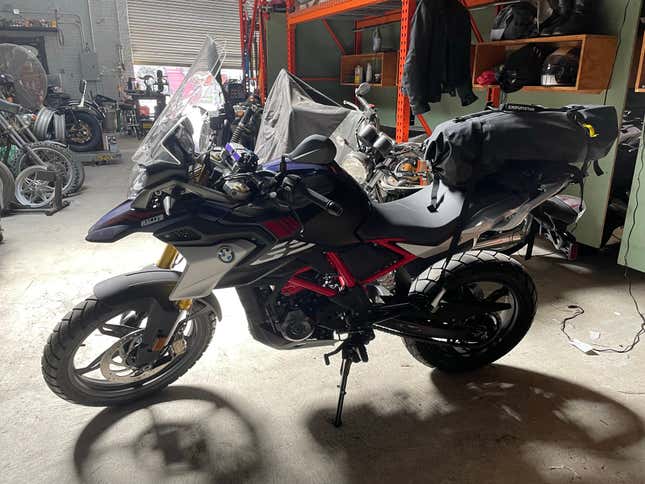
Photo: Steve DaSilva / Jalopnik
I learned, in my travels, that sixth gear on my motorcycle essentially gives me 1,000 RPM per 10 mph travelled. At highway speeds, I’m constantly sitting between 5,000 and 7,000 RPM — on a buzzy, hard-to-balance single-cylinder engine. After my return trip, my feet were still vibrating hours later as I tried to go to sleep.
Plus, being a beginner bike, my 310 is light. This was a windy weekend, and there were times when it took all the focus I had just to keep myself where I wanted to be in the lane. A bigger, heavier bike may have been less interesting on the twisty roads of Connecticut, but it would have been much more composed on the highway.
Lesson Two: Pack Small, Not Light
As much as I would love to own a fancy set of rackless, waterproof bike luggage, I don’t. I own a tail bag that holds my chain and lock, a dry bag with loops for cargo straps, and the rear cargo rack that came on my bike. I ride with the little tail bag constantly, but I’ve only done one ride with the bigger dry bag — one where it was folded up and nearly empty. Riding with the bag full is a different experience.
My duffel was packed lightly, just t-shirts, jeans, non-armored shoes, and a jacket, but it was still big. No matter how I mounted it, longitudinally or transversely, it was going to hang off the bike in some way. Strapping it down lengthwise at least made it hang off less, but that left me with a new issue: The front of the bag intruded on my front seat.
For some kinds of touring, this can actually be nice. When I wanted to sit up straight and relax, the duffel formed a usable back rest — basically a 70-mph La-Z-Boy. But in the face of high-speed crosswinds, I wasn’t sitting up much, and that comfort option came with drawbacks later in the ride. While trying to stand on my pegs to navigate Connecticut’s broken, garbage roads, I found myself shoved forward on the bike by my bag.
Lesson Three: No Matter How Quiet Your Helmet Claims To Be, Don’t Forget Your Earplugs
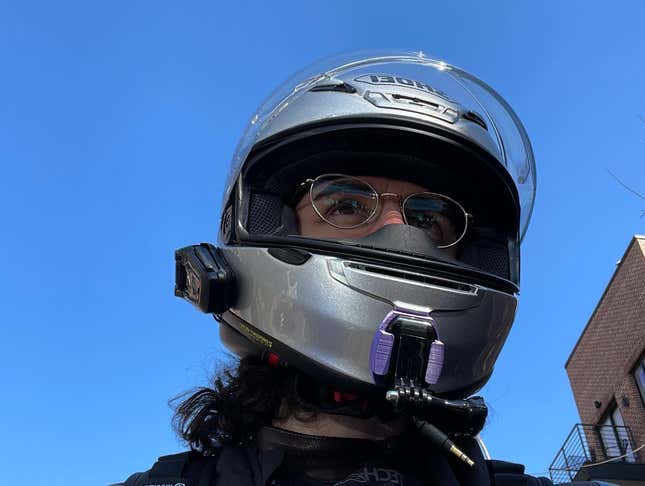
Photo: Steve DaSilva / Jalopnik
My helmet is a full-face Shoei, known to be one of the quieter lids of its day. Sure, it may be a few years old now, but it’s a Shoei — it must be usably quiet on the highway, right? Reader, it was not.
When I’m riding around town, I generally don’t wear earplugs. I also nearly always have my visor open, letting all the sounds and smells of New York City into my helmet. But I’m usually only on the highway for short stints — and the time I spend going highway speeds is even shorter. All this to say, I thought I was prepared to deal with the wind noise after forgetting my earplugs at home. I wasn’t.
After half an hour on the roads, crossing bridges and navigating the clogged highways out of Brooklyn, the wind hadn’t yet had a chance to get to me. But by the one-hour mark, buzzing along at 7,000 RPM into a headwind, I was finding it hard to understand the phone call I was trying to make through my comms system. After the full two hours, and the return trip, the first thing I did was put my earplugs back on my keychain — never to be forgotten again. I screwed my hearing up enough with house shows in college.
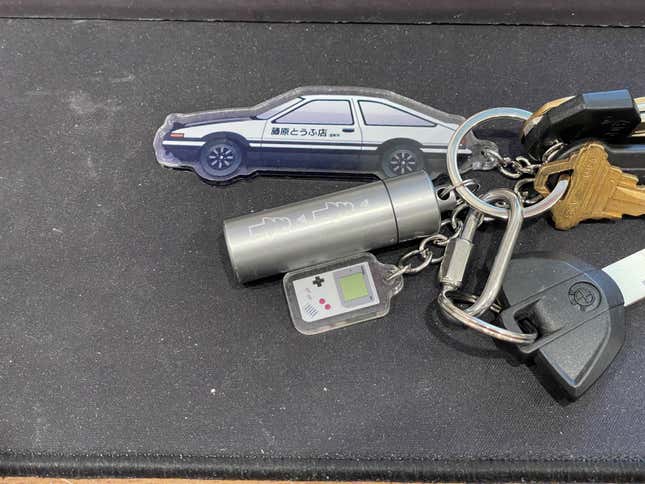
Photo: Steve DaSilva / Jalopnik
Lesson Four: Get a Comms System
Speaking of phone calls, a comms system is invaluable on long highway rides. I’m a person who needs some sort of audio content while on long drives — phone calls, podcasts, the new 100 gecs album — and that apparently goes doubly so for motorcycle trips. With nothing else but a buzzy engine and the battering wind noise for company, I can’t imagine making that trip without my speakers in my helmet.
On the ride out to CT, I could call my family and let them know my ETA. When I hit traffic, they were able to pull up a map and route me around it — even before my phone thought to do the same. On the ride back, I got to listen to Death From Above 1979, which gave me the upbeat energy I needed to stay in good spirits through Manhattan traffic. Personally, I have a Cardo PackTalk Black, but you’ll find offerings just as good from other brands. Just make sure you get one with good speakers — nothing too tinny or bright. Best $350 I ever spent.
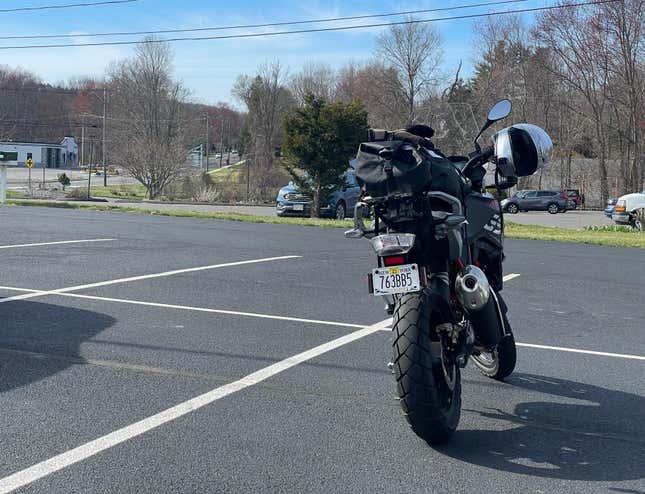
Photo: Steve DaSilva / Jalopnik
Lesson Five: Stand Up When You Can
If you ride something comfortable, a Gold Wing or a Road Glide, this advice may not apply to you. But if you ride something with a cheap, hard seat, stand up every so often. Getting out from behind the windshield at low speeds can get a nice, cool breeze onto your torso, and it gives your butt a rest after all those miles.
I mentioned standing my way through Connecticut’s broken roads, but I did the same on Manhattan’s FDR Drive on the journey home. The former was out of necessity, to keep myself stable, but the latter was out of pure soreness — standing up took my butt off of my hard seat, and that alone was a blessing.
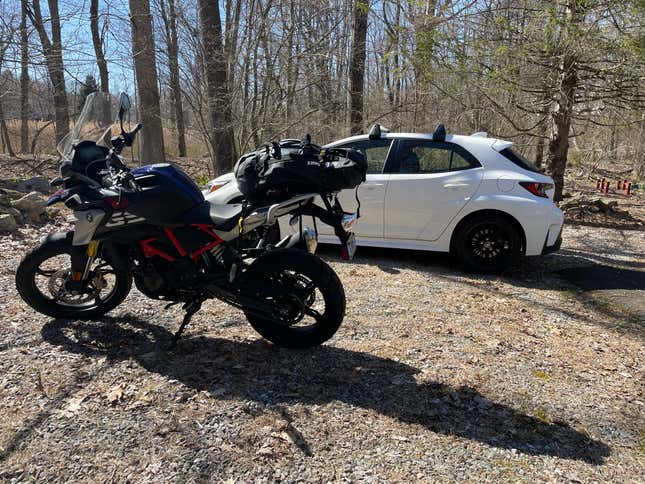
Photo: Steve DaSilva / Jalopnik
Lesson Six: Just Take The Trip
I was nervous about this trip. I’d rarely hit true highway speeds on my motorcycle before — it’s difficult in New York traffic — and I certainly had never done so for such extended periods. I played all sorts of terrible scenarios back and forth in my head, worrying about how the journey would fare. And then, I did it anyway.
I’m glad I did. Had I not, I wouldn’t know just how easy the trip would be. What let me down was the buzziness of my engine and the discomfort of my seat — not my riding ability, and not my safety-minded awareness of drivers around me. If you own a motorcycle, go out and take a trip on it. It might teach you a thing or two.



